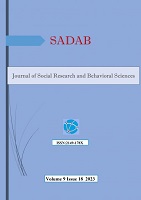Eğitim Örgütlerinde Çift Yönlü İletişim Yöntem ve Tekniklerinin Uygulanması
Application of Two-Way Communication Methods and Techniques in Educational Organizations
Author(s): Ayhan Yıldırım, Tarkan AtmacaSubject(s): Education, Communication studies, Theory of Communication, School education
Published by: SD Yayınevi
Keywords: Educational Organization; Communication; Two-Way Communication;
Summary/Abstract: As a goal, in this study, a study will be conducted on the application of bidirectional communication methods and techniques in educational organizations. One of the basic and first models of the communication process was developed by Aristotle. In Aristotle's model, who is also an educator, the communication process consists of three main elements; speaking, spoken (message) and listening. It requires a resource that contains a thought, idea, need, or information to be transmitted in communication. It converts human mental perceptions into a code containing the meaning that a person would like to convey. The most common code used to explain such mental perceptions is language. The source-coder develops attitudes that can affect communication that are completely appropriate to the personality of the person. The source transforms it into a message that can convey meaning. The message is the physical production of the source encoder. Message codes have a structure that shows how to arrange symbols. A channel is a line that connects the sender and the receiver. A successful communication is received by the willing person who gives it meaning and resolves it. A requirement of correct communication is that the receiver and sender understand the symbols used. After the person analyzes and interprets a message, the recipient becomes the source state. That is, now the person has a goal, such as responding to the original source, and must encode a message to generate a response through a source. This is another valid element of feedback in communication. Again, noise, which is one of the important elements of communication, is a factor that reduces the accuracy of communication. It crashes down on the system like a cloud and can be ready above all other elements. The source produces noise that is conducive to understanding or describing something, if it is not suitable. The healthy part of communication is two-way communication. In terms of organization and management, it is usually defined as a system in which the consciously coordinated activities of two or more people are involved in bidirectional communication. Communication between the source and the recipient, if there is no reflection, loses its process quality and Decays into a linear one-way communication flow, on the other hand, with the participation of the reflection element, communication turns into a form of action and reaction, not just action. This brings with it the process that prevents communication.
Journal: Sosyal Araştırmalar ve Davranış Bilimleri
- Issue Year: 9/2023
- Issue No: 18
- Page Range: 214-228
- Page Count: 15
- Language: Turkish

